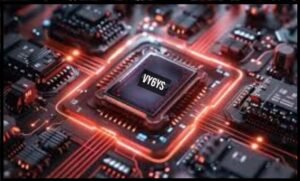Table of Contents
ToggleWhat is 27v513?
The term “27v513” might sound unfamiliar to many, but it is gaining importance in specific technological and industrial applications. Whether you’re a seasoned professional or someone looking to understand the intricacies of this topic, the purpose of this article is to provide a thorough breakdown of Voltage Regulator.
Exploring the Concept Behind 27v513
At its core, 27v513 represents a specific category within voltage standards or specialized components used in various technical fields. This can range from electrical engineering to high-performance industrial machinery. Understanding its role in these systems helps contextualize its relevance, particularly in environments that rely on consistent, regulated power supplies.
In technology, systems that rely on voltage standards like Voltage Regulatorensure efficient and safe operations. If we break down its purpose, semantically related words such as “voltage control,” “regulated power supply,” and “stability in electrical systems” often emerge.
Why is 27v513 Important?
One of the main reasons Voltage Regulator is so crucial is its role in stabilizing and controlling voltage levels. Many systems, particularly those in industrial environments, require precision in maintaining specific voltages. Deviations in voltage can lead to equipment malfunction, inefficiency, and even catastrophic failures.
Voltage Regulator, with its specific designation, ensures that connected equipment receives a regulated and consistent electrical supply. In this regard, it helps avoid potential electrical surges, system overloads, or device breakdowns.
Applications of 27v513 in Various Fields
1. Electrical Engineering
Voltage Regulator has become a staple in the field of electrical engineering. The need for highly precise voltage regulation is a common requirement across projects, ranging from small-scale circuits to industrial-level electrical grids. Electrical engineers rely on components with Voltage Regulator standards to maintain stability in their designs.
2. Manufacturing and Industrial Machinery
In manufacturing, precision is paramount. Industrial machines often depend on a regulated power supply to ensure their internal mechanisms function without glitches. 27v513 components, as part of these systems, are responsible for making sure power levels remain stable during operation.
For instance, in automated factories, power fluctuations can result in delayed production schedules, equipment damage, and safety concerns. By using components that adhere to Voltage Regulator standards, manufacturers minimize these risks.
3. Energy Systems
Another critical domain where Voltage Regulator components come into play is in energy systems. Power plants and energy grids must maintain highly consistent voltage levels to distribute energy efficiently. Any fluctuation, even by a small margin, can affect the overall grid. Using Voltage Regulator in these systems guarantees consistent power delivery to residential, commercial, and industrial areas.
4. Automotive and Aerospace Sectors
In the automotive and aerospace industries, Voltage Regulator finds its use in ensuring that electrical systems within vehicles and aircraft receive a steady voltage supply. In environments where safety is a top priority, the role of components adhering to the 27v513 standard becomes even more vital.
In these sectors, electrical surges or malfunctions can lead to accidents. Voltage Regulator ensures that safety systems, control circuits, and other critical electronics are shielded from voltage fluctuations.
How Does 27v513 Work?
The concept of voltage regulation is at the heart of 27v513. Voltage regulators that use this standard ensure that the output voltage remains within a specific range. Here’s how it typically works:
- Input Voltage Regulation: The system receives an input voltage, which can vary depending on the power source.
- Internal Control Mechanisms: Inside a 27v513-compatible voltage regulator, a series of internal control mechanisms adjust the input voltage to maintain the desired output voltage.
- Consistent Output: Once regulated, the output voltage remains steady, regardless of fluctuations in the input voltage.
These steps prevent issues related to overvoltage or undervoltage, both of which can cause damage to equipment.
Common Challenges Faced When Using 27v513 Components
Despite the many advantages that Voltage Regulator offers, some challenges can arise during its implementation. These include:
1. Compatibility Issues
While Voltage Regulator is a robust standard, it is essential to ensure that all components within a system are compatible. Mismatching components can result in inefficient voltage regulation, leading to potential damage.
2. Cost of High-Quality Components
Another common challenge is the cost. While components adhering to Voltage Regulatorare generally reliable, high-quality regulators and electrical components can be expensive. For companies on tight budgets, finding a balance between cost and quality is crucial.
3. Complexity in Large Systems
In larger electrical systems, particularly those found in industrial settings, implementing 27v513 standards can become complex. The larger the system, the more intricate the voltage regulation becomes, requiring more precise control.
How to Overcome These Challenges
To overcome the challenges associated with Voltage Regulator, a few strategies can be employed:
- Ensure Compatibility: Always verify that components are compatible with each other before implementing Voltage Regulator standards. This helps avoid inefficiency and potential breakdowns.
- Invest in Quality: Though high-quality components can be expensive, they offer long-term reliability. Investing in quality ensures that systems remain operational without frequent malfunctions.
- Use Expert Assistance: In larger systems, expert consultation may be required. Professionals with experience in using 27v513 components can provide valuable insights and help streamline system design.
Final Thoughts on 27v513
In conclusion, 27v513 is a critical voltage standard that plays a significant role in ensuring electrical systems operate smoothly and efficiently. From industrial machinery to energy grids and aerospace applications, 27v513 ensures voltage stability, preventing malfunctions and enhancing overall system safety.
Frequently Asked Questions (FAQs)
1. What exactly is 27v513 used for?
27v513 is primarily used for regulating and stabilizing voltage in various systems, including electrical grids, industrial machinery, and automotive sectors.
2. Can I use 27v513 in residential electrical systems?
While 27v513 is often found in industrial and commercial applications, it can also be used in residential settings that require precision voltage regulation. However, it’s more commonly used in larger systems.
3. How does 27v513 differ from other voltage standards?
27v513 offers a specific level of voltage regulation tailored for systems that need stable voltage to prevent malfunctions. Other standards may have different ranges or tolerances depending on the application.
4. Are there alternatives to 27v513?
Yes, depending on the system requirements, other voltage standards can be used. However, 27v513 is preferred in environments where precision and stability are critical.



